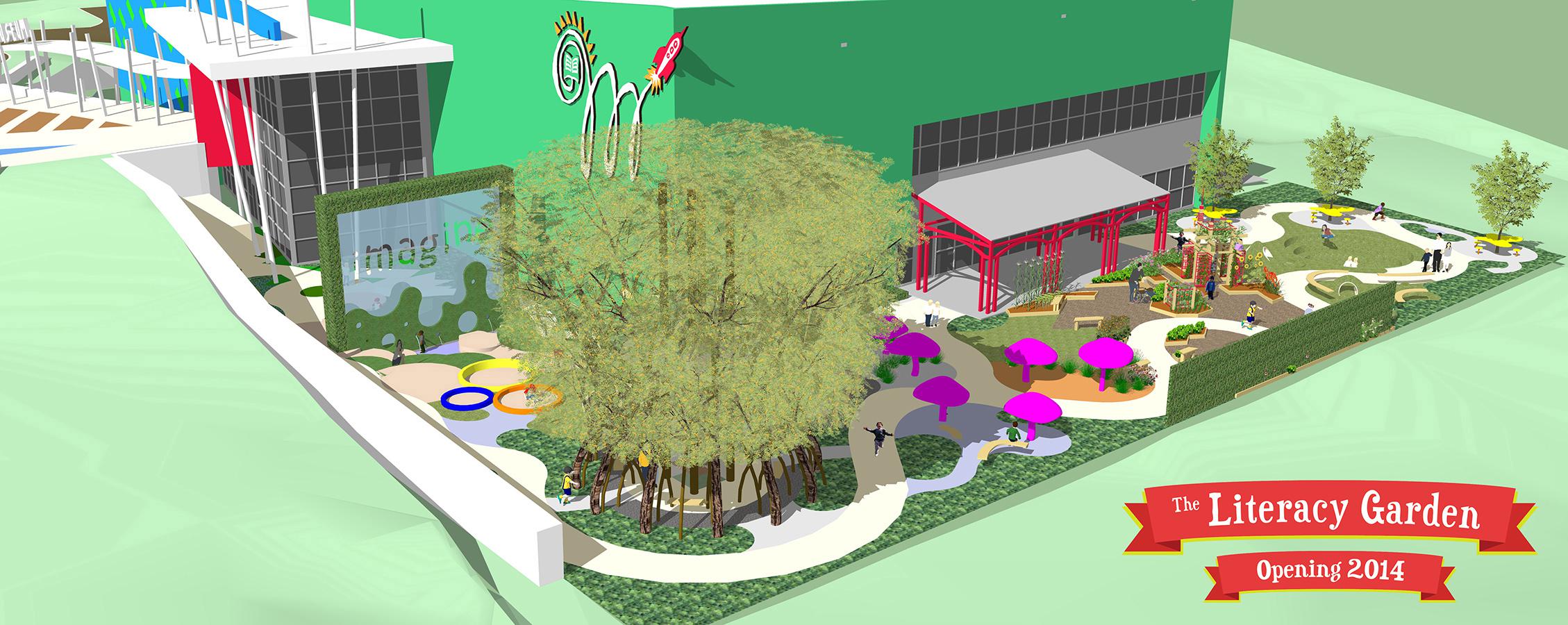Information Possibly Outdated
The information presented on this page was originally released on December 11, 2013. It may not be outdated, but please search our site for more current information. If you plan to quote or reference this information in a publication, please check with the Extension specialist or author before proceeding.
MSU professor helps shape children's literacy garden
JACKSON – Mississippi State University professor Bob Brzuszek is helping the Mississippi Children’s Museum design an innovative garden aimed at cultivating a crop of young readers.
The museum’s literacy garden will provide a play space where infants to 8-year-olds can build language skills. Scheduled to open in 2014, the garden will be equipped with high-tech displays, such as a sound plaza that encourages critical listening and a waterfall that forms words with water droplets. The displays will be interwoven with native plants and interesting sculptures for a rich, multi-sensory learning experience.
“We wanted to create an intellectual blend of art, technology and nature that would be safe and appealing to kids,” said Brzuszek, an associate Extension professor of landscape architecture at MSU serving as a native plant expert on the team. “The garden is an active learning space that should encourage children to play and have new experiences. The design process was more like building a movie set than a garden. We tried to think back to when we were kids and remember all the aspects of the outdoors that intrigued us.”
Brzuszek was part of a team of designers, artists, landscape architects and educators who worked with the museum to plan the space. The garden will reflect the educational themes of the museum’s indoor displays: Mississippi heritage, health and nutrition, literacy, cultural arts, and science and technology, said Susan Garrard, president and chief executive officer of the museum.
“We always intended to have an outdoor area, and once we opened, the concept and design became obvious after we began working with children and their families,” Garrard said. “We wanted an innovative, engaging space that was a reflection of Mississippi and that incorporated art and nature.”
Children will be able to listen, watch and experiment with sounds as they make their way through four ecological zones on a winding, poem-inscribed path. Along the journey, they will be encouraged to turn their experiences into stories they can perform in the garden’s amphitheater. The zones include a mountainous area, a woodland forest, a prairie and short grasslands. All mimic the natural habitats of Mississippi.
Brzuszek said the team chose nontoxic plants that represent the state, offer color, texture or scent throughout the year, and engage children’s imaginations. Among the plant selections are evergreen shrubs for year-long color, sweetly scented wax myrtle for its Mississippi heritage, and bamboo for the distinct sounds it creates when the wind blows through it.
“I’ve traveled quite a bit, and there are very few places like The Literacy Garden in the United States,” said Brzuszek. “There are some great indoor classrooms at children’s museums all over the country, but this garden will definitely be a destination for Mississippians and people nationwide.”
Visitors will enter the garden from a 5,000-square-foot indoor area that includes an interactive state map that teaches children about Mississippi’s geography, history, writers and industries, said Alicen Blanchard, the museum’s director of education.
“We wanted the garden to be a reflection of our state, down to the very last detail,” Blanchard said. “Native plants are an important part of the design that will allow children to make connections between the natural elements of the garden and our state as they experience nature in their own backyards or as they travel throughout the state.”
Although the ultimate goal of the garden is to increase the literacy of Mississippi’s children, the garden can teach much more than reading skills.
“The garden will draw all kinds of wildlife, from birds to bugs to butterflies,” Brzuszek said. “For children who do not have the chance to explore nature on a regular basis, the garden will provide a magical place to get them to notice the natural world.”
Garrard said the garden design encourages free play, but the museum will also offer structured programs and events.
For more information about the garden, visit http://www.mississippichildrensmuseum.com/supportus/build-play-grow/.





